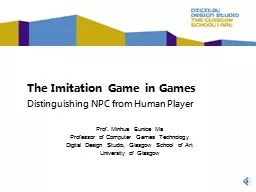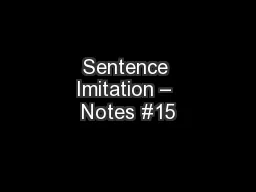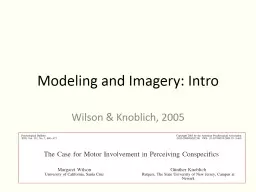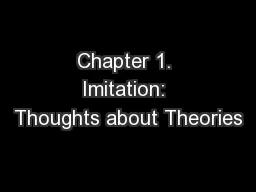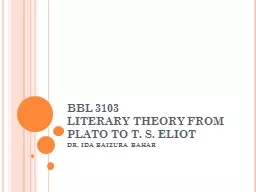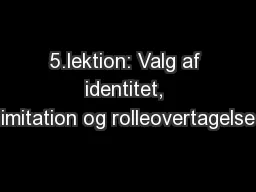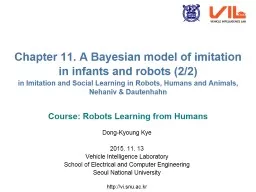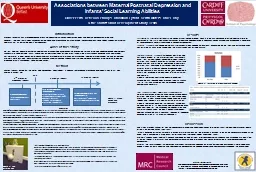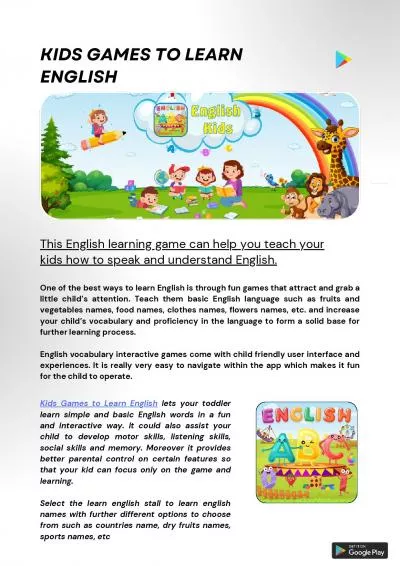PPT-The Imitation Game in Games
Author : lindy-dunigan | Published Date : 2016-07-26
Distinguishing NPC from Human Player Prof Minhua Eunice Ma Professor of Computer Games Technology Digital Design Studio Glasgow School of Art University of Glasgow
Presentation Embed Code
Download Presentation
Download Presentation The PPT/PDF document "The Imitation Game in Games" is the property of its rightful owner. Permission is granted to download and print the materials on this website for personal, non-commercial use only, and to display it on your personal computer provided you do not modify the materials and that you retain all copyright notices contained in the materials. By downloading content from our website, you accept the terms of this agreement.
The Imitation Game in Games: Transcript
Download Rules Of Document
"The Imitation Game in Games"The content belongs to its owner. You may download and print it for personal use, without modification, and keep all copyright notices. By downloading, you agree to these terms.
Related Documents

